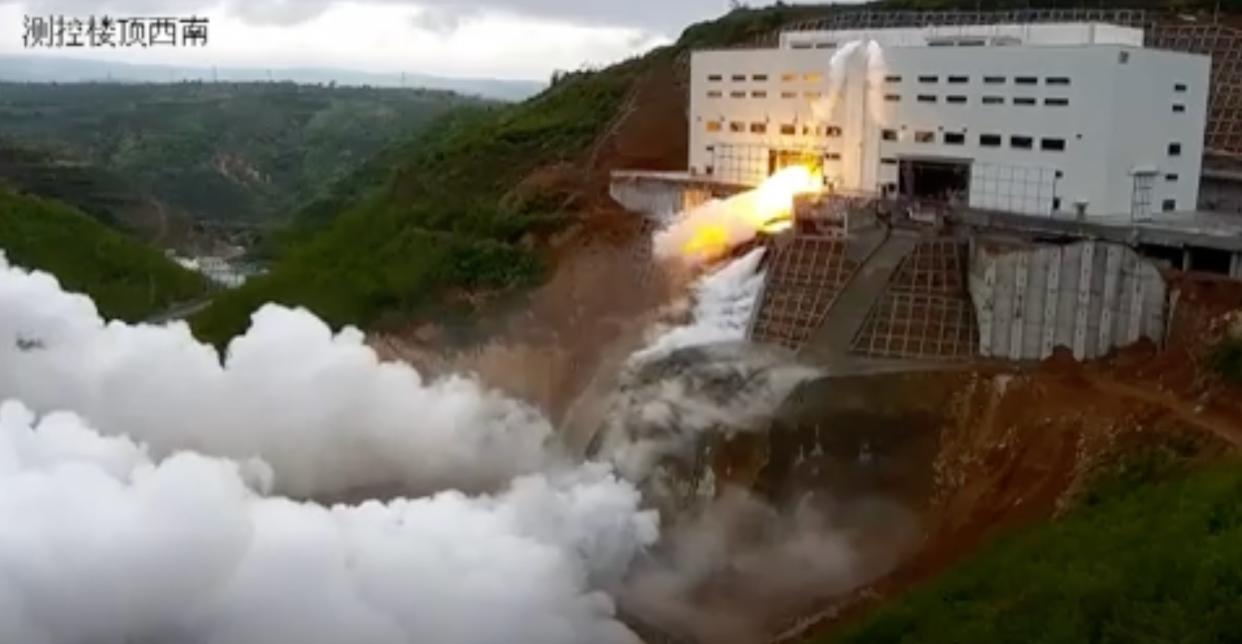Watch China break in new test site for giant moon rocket engines (video)

China has completed a stand for testing huge rocket engines that could power the country's moon exploration efforts.
The test stand at Tongchuan in the northwestern province of Shaanxi is now Asia's largest for testing liquid-propellant rocket engines. The facility was constructed in a cut in a hillside, allowing hot rocket exhaust to be safely directed into the remote valley floor below.
The site conducted a successful engine hot fire test run on April 24, with footage demonstrating a water deluge system designed to cool the exhaust and reduce the sound pressure levels, and showing hot rocket exhaust blasting the valley floor.
Related: The latest news about China's space program

The test stand is designed to support a basic thrust of 700 tons. China has been developing engines capable of 500 tons of thrust as part of its plans to build super heavy-lift rockets for future lunar missions.
The development is a big boost to China's liquid rocket engine infrastructure, providing a substantial improvement in testing capabilities, according to the China Aerospace Science and Technology Corporation (CASC), which owns the stand and is developing China's launch vehicles.
RELATED STORIES:
— Here's what China's 1st moon landing with astronauts might look like (video)
— China's next moon missions get the green light
— China working on new moon rover for 2026 mission to lunar south pole
CASC is developing huge new Long March 9 and Long March 10 series launch vehicles intended for use in deep space exploration, crewed lunar missions and the construction of space infrastructure.
Follow us @Spacedotcom, or on Facebook and Instagram.

